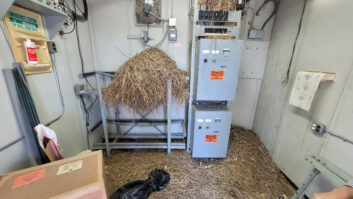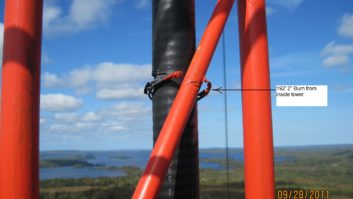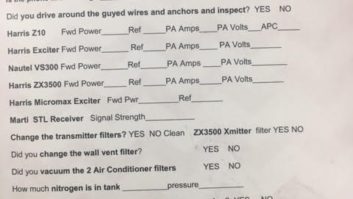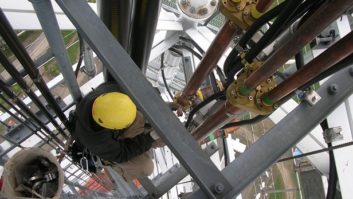The author is responsible for operations and engineering at Joda Media.
Lockboxes, padlocks, keypads or handing out copies of keys have been traditional methods of security at broadcast facilities, but they no longer have to be. Technology exists that can bring enterprise-level physical security to any tower site.
Joda Media offers one version, and I’m working to raise awareness of the benefits of such systems in terms of security and control, especially at sites with tenants or that are at a higher risk for theft or vandalism, such as those near public spaces like hiking trails.
Until recently, the only option for physical security was expensive, multi-door systems of the type used in schools, warehouses and office buildings, where dozens of doors and cameras are managed.
It is impractical and cost-prohibitive to install one at a transmitter building; the cost of having a security company install all the necessary equipment — server, controller, fob reader and camera — for one door is considerable. While I’m sure it is done at some sites, the installation, maintenance and administration costs of a separate security system for each transmitter site can be costly.
In the absence of cost-effective and user-friendly physical security technology, the broadcast industry generally has resorted to other means of controlling access to their tower sites. But the options create as many problems as they solve.
Padlocks and lockboxes bring liability as much as security. I can walk into any hardware store and find an array of hand tools with which to dispatch a padlock or lockbox; you can watch a video of me doing just that with my tool of choice, a $25 sledgehammer.
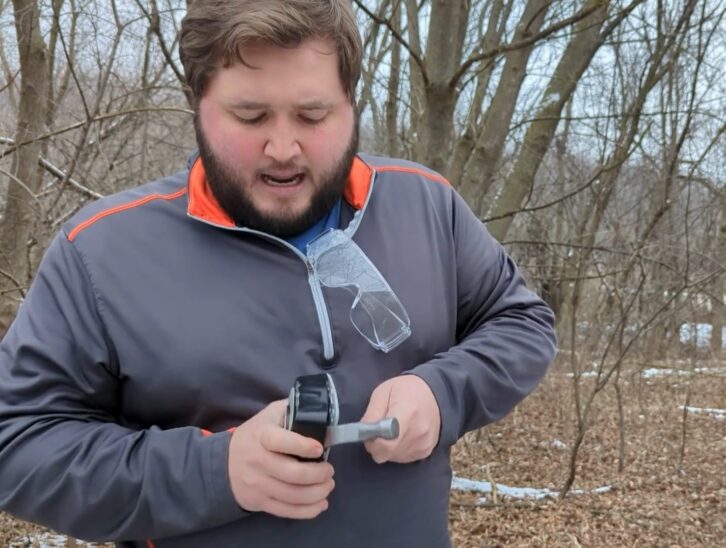
If you put the key to your building in a lockbox or rely on a padlock as your line of defense, you are practically handing the key to any miscreant who comes to your site. And lockboxes, padlocks and keypads have no sensors, connectivity or other means to set off an alarm, make calls, text/email, etc. in the event they are tampered with or destroyed.
Also, too many companies set all of their combinations to the same digits at every site or (worse) have the combinations set to the publicly available frequency of the station. A hand tool might not even be necessary.
I’ve heard countless stories of engineers and other staff visiting a site only to find that the previous visitor had locked the padlock daisy-chain incorrectly, bypassing the lock, or finding the key missing from the lockbox, or that the locks had been changed and their own key no longer worked.
I’ve heard stories of using lighters to unfreeze the dials of a lockbox, of vandals spray-painting obscenities on new solid-state transmitters or pouring soda into processors. Who wants to drive halfway across a state just to hand someone a key? Keys that can be copied, codes that can be shared, I could go on.
These sites lack protection, monitoring, logging, reporting or administration capabilities, not to mention convenience.
A good fit
I was born and raised in radio; I’ve been going to tower sites and transmitter buildings for as long as I can remember. In recent years, my company has been working with schools and businesses to upgrade IT and security infrastructure at their buildings.
When I learned about cloud-based physical security, I immediately thought of tower sites. How cool for a broadcaster to be able to have a couple hardware components at each site and then seamlessly monitor and manage all their sites, in real time, from a central location (or anywhere else) via a phone or browser.
Cloud-based hardware means that there’s no longer a need for an expensive, physical server or big, multi-door controllers. This hardware uses built-in cloud functionality, needing only an internet connection to communicate with a server in the cloud.
Instead of expensive controllers, there is now a single-door controller: a compact, efficient unit that can handle all the relays and sensors for one door. Plus, cloud hardware allows for video to be built into the fob reader, making a fob reader and camera all in one.

The system can be cost-effective for small buildings, requiring only two pieces of hardware — the reader/camera and the single-door controller — while delivering the robust security features of large, multi-door physical security systems.
User access and management can be done from any phone or browser. Sensors can sound alarms and call/text/email in the event of tampering, break-in or a door left ajar. Real-time logging and reporting can help manage sites and verify access events. Doors can be unlocked from anywhere with a click. Single-use, digital keys can be texted or emailed to contractors so they can access sites as needed.
The field of cloud-based physical security is exploding, and various consumer- or enterprise-grade systems are available, for DIY or professional installation. My company, Joda Media, has made a few enhancements, plus the necessary shields from RFI, and has a system that is designed for broadcast transmitter facilities, and we are introducing it to the U.S. broadcast industry.
While we offer Motorola’s Avigilon Alta suite, which we feel is the highest standard for this type of technology, there are many good systems out there. I’ll be discussing our system, examples from other manufacturers, how to install them, best practices and more at the Midwest Regional Broadcasters Clinic in Madison, Wis., in September.
If you’re looking to streamline tenant access at your site, if you have a high-value/high-risk site or are simply looking to upgrade convenience and control, consider cloud-based physical security.


